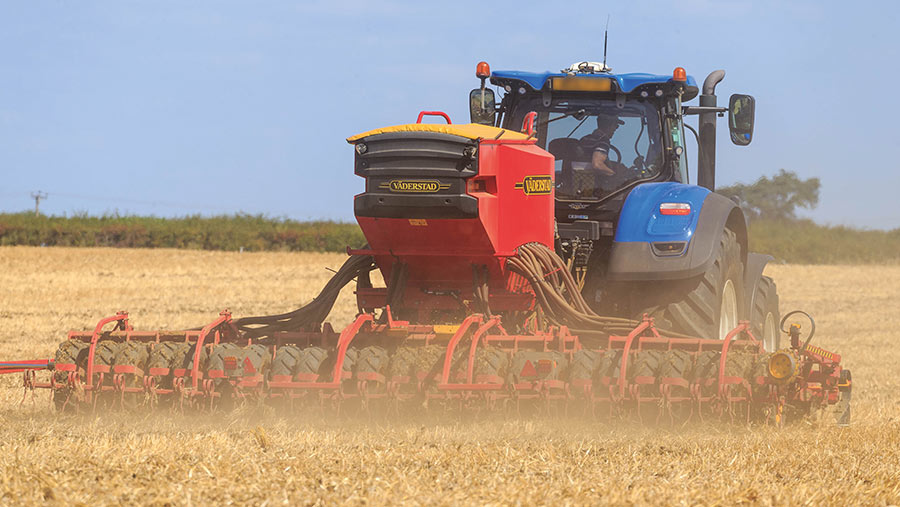Trial shows how to establish a good cover crop before harvest
 © Tim Scrivener
© Tim Scrivener Establishing a good cover crop stand can be difficult, as sowing often coincides with the busy harvest period along with seed-beds being too dry.
One solution could be to establish them before harvest, and a trial in Northamptonshire saw good results in the bone-dry soils experienced in the hot summer of 2022.
Latest results from Lamport AgX, Agrovista’s heavy-land trials site in Northamptonshire, show that blowing a cover crop into a standing crop of wheat a few weeks ahead of harvest can prove effective.
See also: Why Lincs grower opted for US-style grain storage system
The cover crop consisted of phacelia, buckwheat, linseed and berseem clover, and was blown into the crop using a pneumatic spreader.
“This technique is particularly useful when growers find it a problem getting cover crops established in good time, particularly during a late harvest,” says Niall Atkinson, Agrovista’s farming systems R&D adviser.
Good establishment
“You have to pick your moment. You want to wait for a little bit of moisture to help seeds establish, but you can go between four and six weeks ahead of harvest, so there is a reasonable window to wait for a little bit of rain.
“Even in the dry summer we’ve just had, we achieved fairly good establishment and plants have moved on well.”
A further advantage of blowing seed on at this timing is that the wheat straw provides a mulch for the young cover crop.
The benefits were obvious this year; another cover crop plot that had been straw-raked once then direct-drilled on 18 August into the wheat stubble has struggled.
“We’ve not had a lot of rain at Lamport since, so establishment was quite poor using the direct-drilling,” says Mr Atkinson.
“By late September, the plants were mostly there, but some are very small, so my money would be on the blown-on cover at this stage.”
Light discing
While post-harvest direct-drilling proved problematic in the dry summer, adding two shallow passes with a light disc cultivator (Simba X-Press) between straw raking and drilling made a big difference.
“Moving a bit more soil created a better seed-bed and we achieved a nice even establishment of the cover crop and good blackgrass emergence,” he says.
“After several years of trials, our message now is that where we are establishing a cover crop post-harvest, moving a little bit of soil to achieve good seed to soil contact and to mineralise nitrogen will get the cover crop away in good shape.
“We might think we are doing more for soil health by direct-drilling, but where conditions are not ideal we are probably better taking a small step back.
“The benefits of a vigorously growing cover crop will far outweigh any potential disadvantages caused as a result of moving a little soil.”
Encouraging blackgrass
One disadvantage with blowing in a cover crop is the lack of shallow soil disturbance.
At Lamport, a heavy land site with a very high background level of blackgrass, tickling the top 1-2cm has been found to be very beneficial in terms of getting blackgrass to chit so an effective kill can be made when the cover crop is desiccated.
“We don’t want to smother out blackgrass, we want it to be actively growing among the cover crop,” says Mr Atkinson. “So we ran a straw rake through the growing cover crop on 20 September.
“We created quite a nice tilth that will encourage more blackgrass to grow.
“The rake did knock the cover crop back a little, but it quickly recovered and was growing strongly again within a week or so, along with a flush of blackgrass.”

